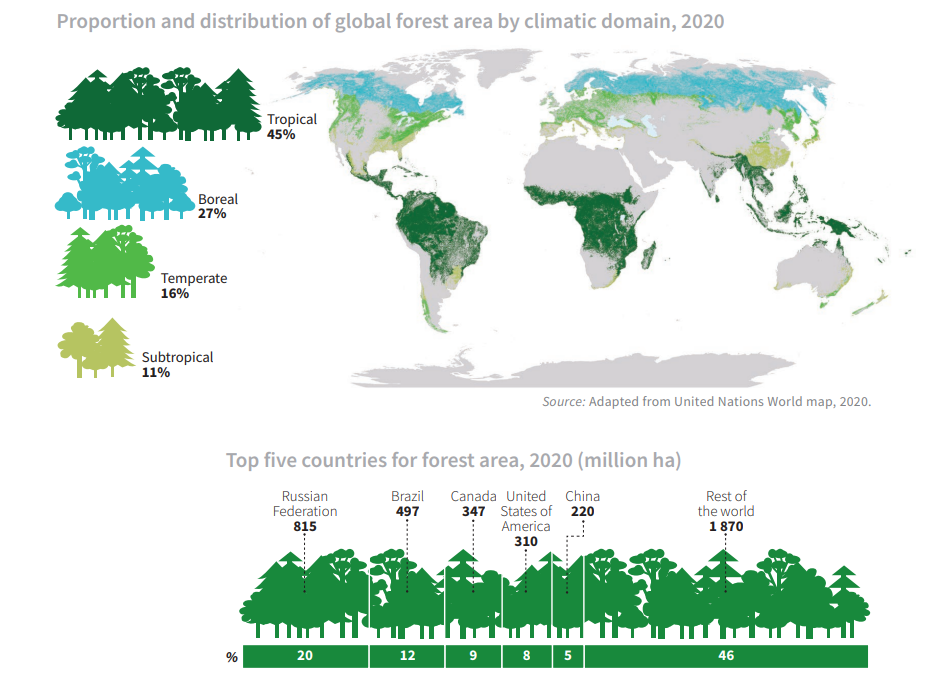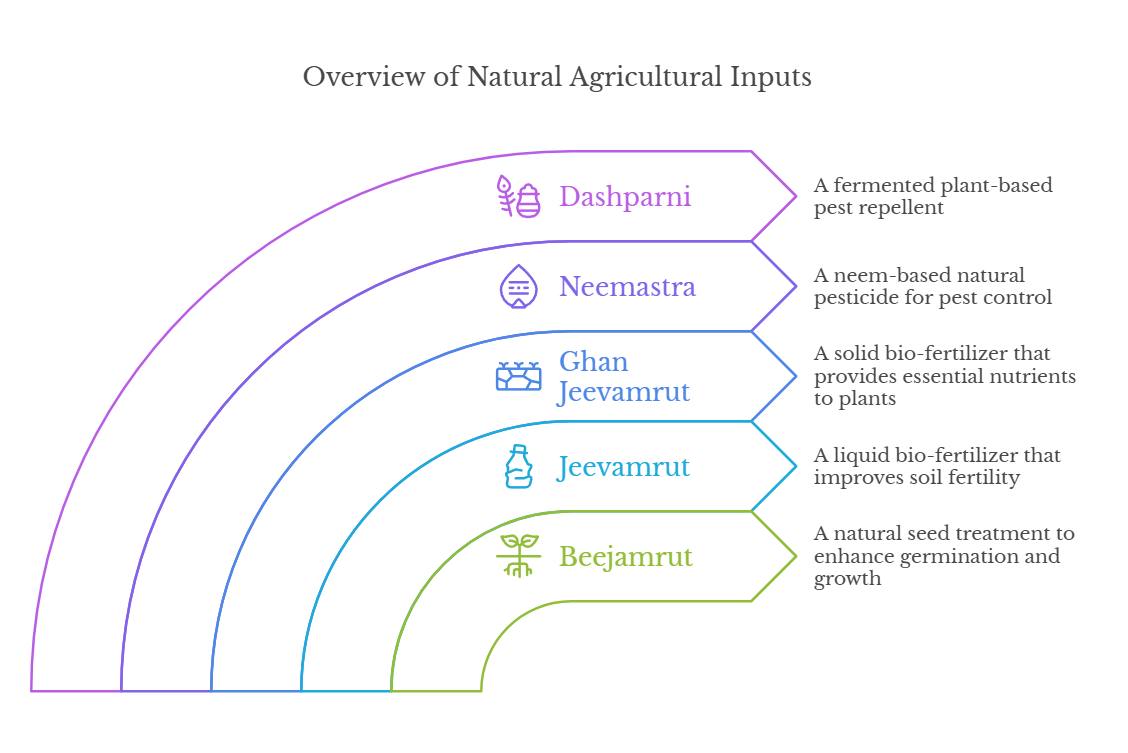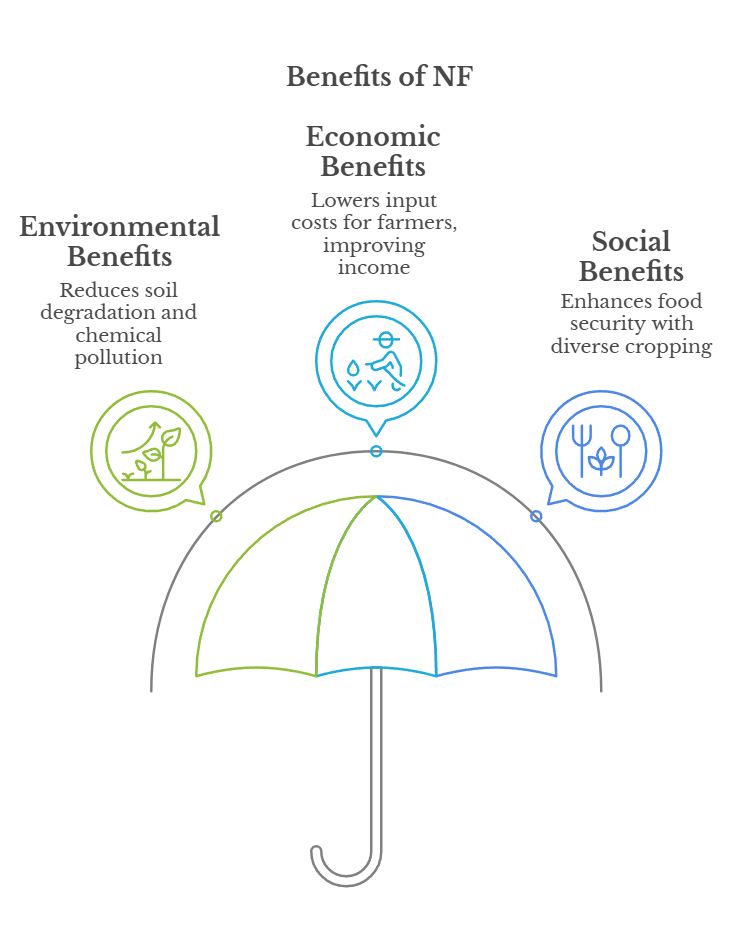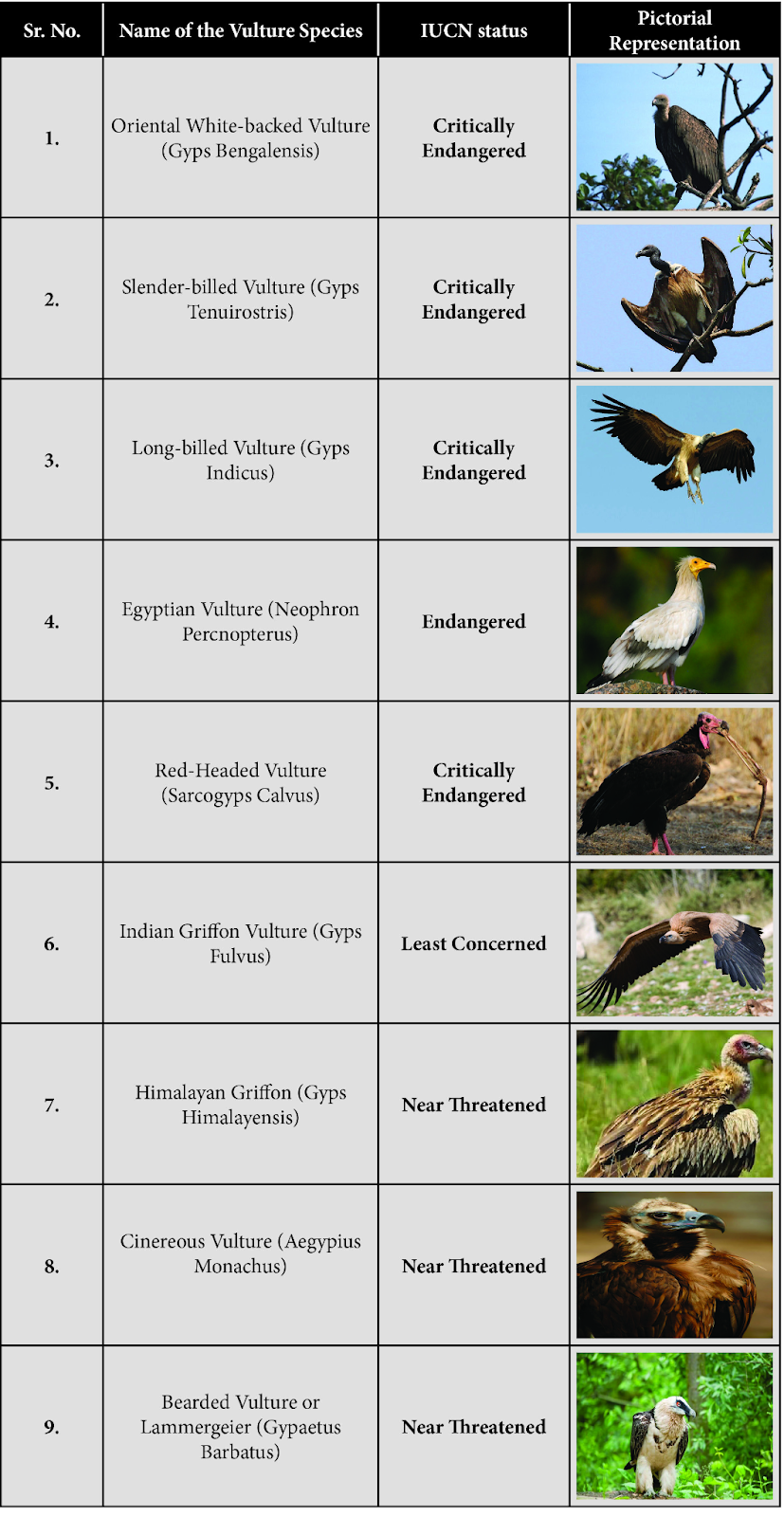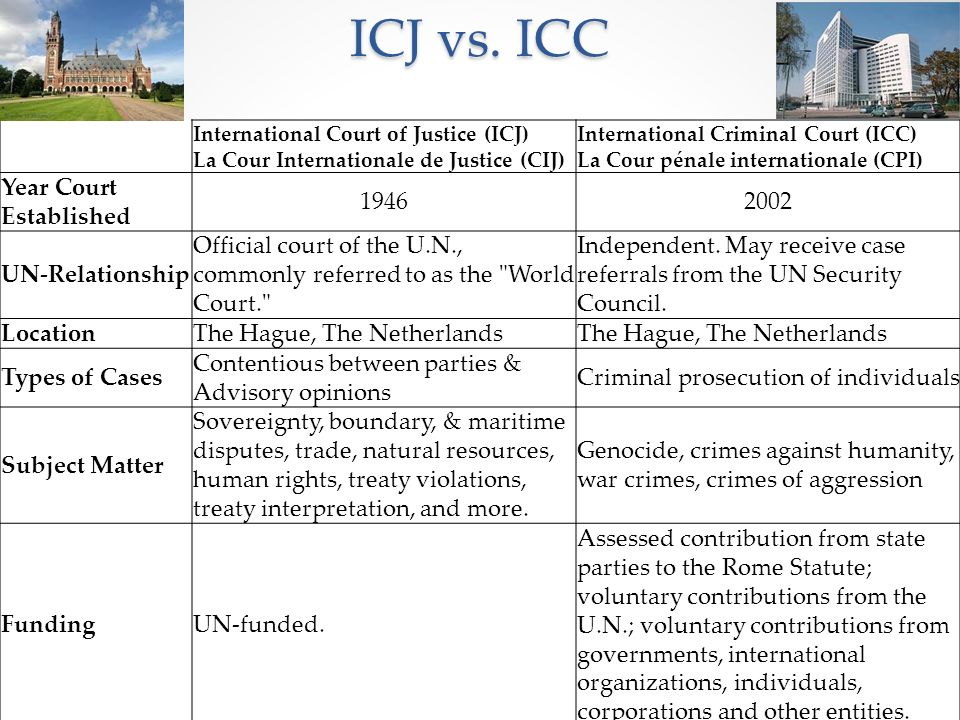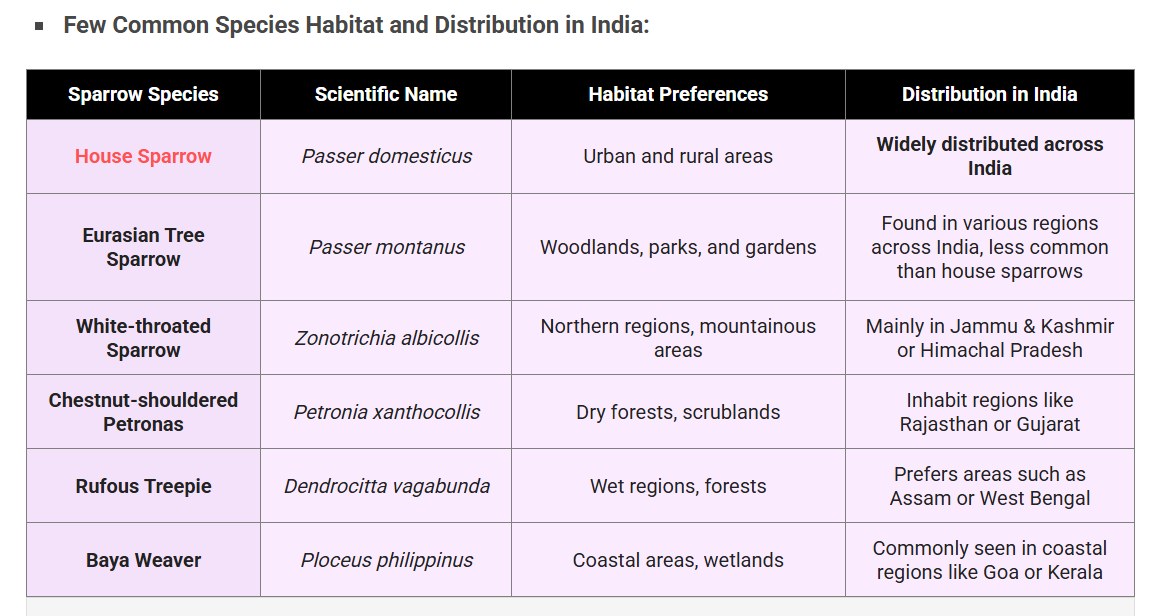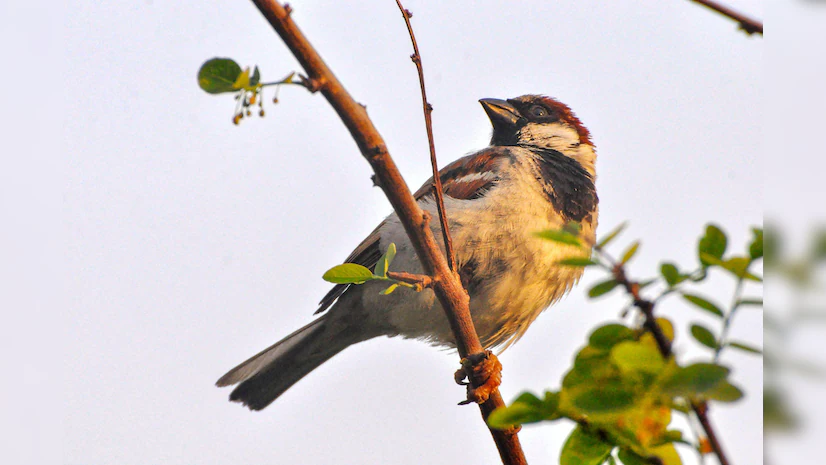Social Justice
Fast Track Special Courts
For Prelims: Fast Track Special Courts (FTSCs), FTSC Scheme, Protection of Children from Sexual Offences (POCSO) Act, 2012, Nirbhaya Fund.
For Mains: Fast Track Special Courts (FTSCs) scheme and its role in addressing sexual violence.
Why in News?
The extension of the Fast Track Special Courts (FTSCs) Scheme till March 2026 aims to ensure speedy and time-bound justice in cases of rape and offences under the Protection of Children from Sexual Offences (POCSO) Act, 2012.
What is the Fast Track Special Courts Scheme?
- About: It is a centrally sponsored scheme under the Ministry of Law & Justice that aims to establish FTSCs under the Nirbhaya Fund.
- In 2019, the Supreme Court ordered fast disposal of POCSO cases, prompting the launch of the FTSC Scheme on 2nd October, 2019.
- Cost Sharing: The Centre contributes 60%, and States 40%, except for Northeastern, Sikkim, and hilly states, where it's 90:10.
- UTs with legislatures follow a 60:40 ratio, while those without legislature get full central funding.
- Need of FTSCs:
- Case Backlogs: India's courts face a growing backlog of rape and POCSO cases, increasing from 2,81,049 in 2020 to 4,17,673 by the end of 2022.
- Timely Justice: The POCSO Act, 2012, mandates Special Courts to complete trials within one year of taking cognizance of the offense.
- Deterrence: Harsh punishment deters crime, but its impact depends on timely trials and swift justice for victims.
- Performance: As of December 2024, more than 700 FTSCs are operational across 30 States/UTs. These include 406 exclusive POCSO (ePOCSO) Courts
- FTSCs boast a 96.28% disposal rate in 2024, and over 3 lakh cases have been disposed of collectively by FTSCs since its launch.
What is the POCSO Act?Click Here to Read: POCSO Act |
What are the Challenges in Fast Track Special Courts?
- Low Number of FTSCs: Although 1,023 FTSCs were sanctioned, only 747 FTSCs are operational as of December 2024.
- India needs at least 1,000 more FTSCs to dispose of one rape or POCSO case every three minutes to clear the backlog in a year.
- Pendency: Fast-track courts often face heavy caseloads, causing delays that undermine their goal of swift justice.
- Maharashtra and Punjab have high case disposal rates, while West Bengal has the lowest leading to disparities in justice delivery.
- Underutilization of Nirbhaya Fund: The Nirbhaya Fund, set up in 2013 to enhance women's safety, remains underutilized, with Rs 1,700 crore still unspent.
- Lack of Specialized Support: Many FTSCs lack victim-friendly facilities, including:
- Vulnerable Witness Deposition Centers to provide a supportive environment for survivors.
- Female Public Prosecutors and Counselors to assist victims in navigating the legal process.
How Can the Fast Track Special Courts be Strengthened?
- Improving Judicial Parameters: States should appoint Special Judges for POCSO cases, provide sensitization training, and ensure female public prosecutors.
- Vulnerable Witness Deposition Centers (VWDCs): Establish VWDCs in all districts for victim testimony recording and child-friendly trials behind closed doors.
- Appoint child psychologists in FTSCs for pre-trial and trial support.
- Technological Upgrades: Courtrooms should be upgraded with audio-video recording systems, LCD projectors, and enhanced IT systems for electronic case filing and digital records.
- Forensic Labs: Increase forensic labs and train manpower to speed up pending cases and ensure timely DNA reports, aiding fair and speedy justice.
Conclusion
Fast Track Special Courts (FTSCs) have significantly improved case disposal rates, ensuring quicker justice for survivors of sexual crimes. However, challenges such as limited courts, underutilized funds, and lack of victim-friendly infrastructure persist. Strengthening FTSCs with more courts, technological upgrades, and victim support mechanisms is crucial for timely justice and legal deterrence.
|
Drishti Mains Question: What is the Fast Track Special Courts (FTSCs) scheme? What challenges hinder their effectiveness? |
UPSC Civil Services Examination, Previous Year Question (PYQ)
Mains
Q. Examine the main provisions of the National Child Policy and throw light on the status of its implementation. (2016)
Q. We are witnessing increasing instances of sexual violence against women in the country. Despite existing legal provisions against it, the number of such incidences is on the rise. Suggest Some innovative measures to tackle this menace. (2014)


Internal Security
UAVs in Modern Warfare
For Prelims: Unmanned Aerial Vehicles (UAVs), Strait of Hormuz, MQ-9 Reaper Drone, Indrajaal, MSMEs, AI, Robotics, Swarm Technology.
For Mains: Role of UAVs in modern warfare, Concerns related to UAVs for India and way forward.
Why in News?
The sighting of two Chinese unmanned aerial vehicles (UAVs) near Okinawa (Japanese island) has raised concerns over the increasing role of UAVs in military and surveillance operations.
What are the Advantages of Drones for Military Operations?
- Cost-Effectiveness: Drones have lower purchase and operational expenses (fuel, maintenance, and logistics).
- An MQ-9 Reaper drone costs USD 32 million, while an F-35 exceeds USD 80 million.
- Reduced Human Risk: Drones reduce the risk of pilot casualties, making them ideal for high-risk missions in hostile environments. E.g.,
- US-Iran 2019: Iran shot down a US drone over the Strait of Hormuz. Despite tensions, the US did not retaliate.
- Persistent Surveillance: Drones can stay over a battlefield for long periods, providing real-time intelligence and improving situational awareness for decision making.
- AI-powered drones operate autonomously, quickly identifying and engaging targets with less human involvement.
- Operational Flexibility: Drones can swarm for coordinated attacks and serve in reconnaissance, surveillance, and precision strikes.
- In the Nagorno-Karabakh conflict, UAVs, particularly Turkish Bayraktar and kamikaze drones by Azerbaijan, played a key role in weakening the Armenian army, leading to Armenia's defeat.
- Suitability for Asymmetric Warfare: Drones are highly effective in counterinsurgency and counterterrorism, delivering precise strikes with minimal damage.
- The US, and Turkey have used them in the Middle East and Africa for eliminating terrorists.
- Lower Logistical Requirements: Drones do not require extensive infrastructure like airbases, refueling tankers, or pilot support systems.
- E.g., Russia easily deployed Iranian Shahed-136 drones to weaken Ukraine's defenses.
How Concerns are Related to Use of UAVs?
- Facilitating Conflict: Drones reduce the risk and cost of warfare, making it easier for states to engage in military actions without deploying troops. E.g., use of US drones in the Ukraine war.
- Empowerment of Non-State Actors: Drones enable non-state actors to compete with state militaries. E.g.,
- Escalation of Regional Tensions: The expanding drone market, led by China, Turkey, and Israel, fuels arms races and conflict.
- E.g., the US drone strikes in Afghanistan from Pakistani soil have triggered retaliation and escalated terrorism in Pakistan.
- Deniability and Proxy Warfare: Drones allow nations to carry out strikes without direct attribution, maintaining plausible deniability.
- It enables indirect involvement in conflicts by supplying drones to allies or rebel groups, fueling proxy wars.
- Prolonged Warfare: Civilian casualties from drone strikes, such as those in US operations in the Middle East, have fueled public outrage and radicalization, perpetuating cycles of violence.
What are the Impacts of Rivals Using UAVs Against India?
- Increased Security Threats: Growing drone incursions on India’s borders with Pakistan and China pose military and internal security threats due to weapon and drug smuggling.
- AI-powered drones enhance surveillance for Pakistan in Kashmir and China in Ladakh, challenging India's strategic secrecy.
- Military Asymmetry: China leads in drone warfare with AI-driven surveillance and strikes, while Pakistan leverages Chinese UAVs for better reconnaissance and combat.
- Despite India’s development of Indrajaal (an AI-powered anti-drone system), it lags in counter-drone capabilities compared to China.
- Cybersecurity Risks: Indian drone hacking incidents near the border expose cybersecurity risks. Strengthening electronic warfare remains a challenge.
- Dependence on Foreign Drones: India's reliance on imported drones like the MQ-9B risks supply chain disruptions and limits military self-reliance.
How India Can Strengthen Its UAVs Capabilities?
- Counter-Drone Measures: Strengthen systems like Indrajaal to detect and neutralize threats and invest in jamming and hacking countermeasures.
- Improve drone battery efficiency and stability in harsh Himalayan conditions to counter cross-border threats.
- Expand eagle training by defense forces to intercept enemy drones.
- Indigenous Drone Development: Promote domestic manufacturing, strengthen public-private partnerships, and support drone startups & MSMEs with funding and incentives.
- Promote development of drone nets to entangle drone rotors mid-flight, disabling propulsion and bringing them down
- R&D Investment: Invest in AI, robotics, pilot training, and research on autonomous drones, swarm technology, and high-altitude UAVs.
Conclusion
The increasing use of UAVs in military and surveillance operations presents both strategic advantages and security threats. While India faces growing drone incursions from adversaries, strengthening counter-drone systems, promoting indigenous development, and investing in AI-driven drone technology are crucial for enhancing national security and maintaining military competitiveness.
|
Drishti Mains Question: How can India strengthen its counter-drone capabilities to address cross-border threats? |
UPSC Civil Services Examination, Previous Year Question (PYQ)
Prelims
Q. Consider the following activities: (2020)
- Spraying pesticides on a crop field
- Inspecting the craters of active volcanoes
- Collecting breath samples from spouting whales for DNA analysis
At the present level of technology, which of the above activities can be successfully carried out by using drones?
(a) 1 and 2 only
(b) 2 and 3 only
(c) 1 and 3 only
(d) 1, 2 and 3
Ans: (d)
Mains
Q. Border management is a complex task due to difficult terrain and hostile relations with some countries. Elucidate the challenges and strategies for effective border management. (2016)


Biodiversity & Environment
International Day of Forests 2025
For Prelims: International Day of Forests, Food and Agriculture Organization (FAO), Carbon Sequestration, National Afforestation Programme, Environment Protection Act of 1986, Compensatory Afforestation Fund Management and Planning Authority (CAMPA).
For Mains: Significance of Forests for India, Issues Associated with Forests in India.
Why in News?
The International Day of Forests, also known as World Forests Day (WFD), is celebrated each year on 21st March to raise awareness about the importance of forests and trees for the survival of humanity and the planet.
- The theme for 2025 WFD is "Forests and Food".
International Day of Forests
- The International Day of Forests evolved from the "World Forestry Day" established by the Food and Agriculture Organization (FAO) in 1971.
- It was formally recognized by the United Nations General Assembly in 2012.
- It aims to raise awareness about forest conservation and sustainable management.
Note
- Definition of Forest in India: In T.N. Godavarman Thirumulpad vs the Union of India 1996 Case, the Supreme Court interpreted that the word “forest” must be understood according to its “dictionary meaning”.
- This description covers all statutorily recognised forests, whether designated as reserved, protected or otherwise.
What is the Significance of Forests?
- Ecological Significance:
- Carbon Sequestration: Forests absorb ~30% of global CO₂ emissions (from fossil fuel) annually (FAO, 2020) and store 861 gigatonnes of carbon, making them crucial for climate change mitigation.
- Biodiversity Conservation: Forests host 80% of terrestrial biodiversity (UNEP, 2021).
- India’s forests and tree cover (25.17% of total area, ISFR 2023) shelter species like tigers (3,167, NTCA 2022) and Asian elephants (~30,000, MoEFCC 2023).
- Water Security: Forests regulate hydrological cycles, recharge groundwater, and mitigate floods.
- Over 85% of major cities rely on forested watersheds for freshwater. In crises, forests provide up to 20% of rural family income and ensure food security.
- The Western Ghats in India sustain rivers that supply water to 245 million people.
- Economic and Livelihood Value:
- Global Dependence: 1.6 billion people (including 70 million indigenous communities) rely on forests for food, fuel, and medicine (World Bank, 2022).
- Employment: Over 30 million people in India depend on forestry activities for their livelihood, with MGNREGA supporting afforestation projects and rural livelihoods.
- Livestock Support: Forests sustain 30-40 million pastoralists and provide fodder for 4 billion livestock. Trees enhance rangelands by offering shade and protection, improving livestock productivity.
- Cultural Significance: Forests are culturally revered for regeneration, health, and longevity.
- India has 100,000+ sacred groves (e.g., Kavus in Kerala, Law Lyngdoh in Meghalaya), preserving biodiversity and rare flora like Myristica malabarica (Karnataka).
- Genetic Diversity: Forests safeguard wild relatives of crops (e.g., wild rice in Assam), essential for breeding climate-resilient varieties.
What is the Status of Forests in India?
- As per the India State of Forest Report (ISFR)-2023, forest and tree cover is 25.17% of its geographical area (GA), with forest cover at 21.76% and tree cover at 3.41%.
- The country's forest and tree cover has increased by 1,445.81 km² compared to 2021.
- The report said 19 states/UTs have above 33% of the geographical area under forest cover.
- India's forest carbon stock is estimated at 7,285.5 million tonnes, with an increase of 81.5 million tonnes compared to 2021.
- India's mangrove cover is 4,991.68 km² (0.15% of GA), with a 7.43 km² decline since 2021.
- Largest Forest Cover (Area wise): Madhya Pradesh, Arunachal Pradesh, Chhattisgarh.
- Highest % of Forest Cover: Lakshadweep (91.33%), Mizoram (85.34%), Andaman & Nicobar (81.62%).
Global Forest Area (FAO 2020)
What are the Initiatives for Forest Conservation?
Global Initiatives
- REDD+ (Reducing Emissions from Deforestation and Forest Degradation): A UNFCCC initiative incentivizing developing countries to reduce deforestation and enhance forest carbon stocks.
- The Bonn Challenge (2011): Launched by Germany and IUCN, aims to restore 150 million hectares by 2020 and 350 million hectares by 2030.
- New York Declaration on Forests (2014): A non-binding commitment to halve deforestation by 2020 and end it by 2030.
- The Paris Agreement (Art. 5): It urges conservation and enhancement of GHG sinks and reservoirs, including forests to combat climate change.
- FAO’s Global Forest Resources Assessment (FRA): Provides comprehensive data on forest resources, trends, and conservation efforts globally.
- Convention on Biological Diversity (CBD): CBD is a key international agreement for forest conservation, aiming to conserve biodiversity, sustainably use its components, and share benefits from genetic resources.
India’s Initiatives
- Forest Conservation Act, 1980
- National Afforestation Programme
- Environment Protection Act of 1986
- Compensatory Afforestation Fund Management and Planning Authority (CAMPA): Uses funds from diverted forest land projects for afforestation.
- Green India Mission (GIM): It is part of the National Action Plan on Climate Change (NAPCC), launched in 2015-16 with the focus on biodiversity, water resources, and carbon sequestration.
- It aims to expand and improve 10 mha of forest/tree cover and boost livelihoods for 3 million households through forest-based income.
- Sub-Missions: Enhancing Forest Cover, Urban Greening and Agro-Forestry & Social Forestry.
- National Agroforestry Policy: It was launched in 2014 to promote agroforestry for climate resilience, environmental conservation, and economic benefits.
- It focuses on Quality Planting Material (QPM) through nurseries and tissue culture.
- ICAR-Central Agroforestry Research Institute (CAFRI) is the nodal agency, with support from state agricultural universities.
- Forest Fire Prevention & Management Scheme: It is a centrally sponsored scheme that supports states and UTs in preventing and controlling forest fires.
- National Action Plan on Forest Fire (2018) developed with World Bank, NDMA, and State Forest Departments.
- Forest Survey of India (FSI) uses remote sensing, GPS, GIS, and a satellite-based monitoring system for real-time fire alerts.
- PM Van Dhan Yojana (PMVDY): Enhance tribal livelihoods by adding value to Minor Forest Produce (MFPs) through skill training, infrastructure, and market linkages.
- Van Dhan Vikas Kendras (VDVKs): 300 members from 15 SHGs per Kendra for processing and marketing MFPs.
What are the Challenges in Forest Conservation?Click here to Read: Challenges in Forest Conservation What Measures can be Adopted to Enhance Forest Conservation in India?Click here to Read: Measures to Enhance Forest Conservation |
Conclusion
India's forest conservation efforts, through initiatives like the Green India Mission, Van Dhan Yojana, and Forest Fire Management, promote ecosystem restoration, climate resilience, and livelihood enhancement. On International Day of Forests 2025, reaffirming commitment to sustainable policies and community-driven conservation is vital for a greener and prosperous future.
|
Drishti Mains Question: Examine the challenges of forest conservation in India and propose strategies for sustainable management in the context of climate change and development. |
UPSC Civil Services Examination, Previous Year Question (PYQ)
Prelims
Q1. At the national level, which ministry is the nodal agency to ensure effective implementation of the Scheduled Tribes and Other Traditional Forest Dwellers (Recognition of Forest Rights) Act, 2006? (2021)
(a) Ministry of Environment, Forest and Climate Change
(b) Ministry of Panchayati Raj
(c) Ministry of Rural Development
(d) Ministry of Tribal Affairs
Ans: (d)
Q2. A particular State in India has the following characteristics: (2012)
- It is located on the same latitude which passes through northern Rajasthan.
- It has over 80% of its area under forest cover.
- Over 12% of forest cover constitutes the Protected Area Network in this State.
Which one among the following States has all the above characteristics?
(a) Arunachal Pradesh
(b) Assam
(c) Himachal Pradesh
(d) Uttarakhand
Ans: (a)
Mains
Q. “The most significant achievement of modern law in India is the constitutionalization of environmental problems by the Supreme Court.” Discuss this statement with the help of relevant case laws. (2022)


Important Facts For Prelims
Raisina Dialogue 2025
Why in News?
India hosted the 10th edition of the Raisina Dialogue 2025 in New Delhi, with New Zealand's Prime Minister, Christopher Luxon, as the Chief Guest..
What is the Raisina Dialogue?
- About: Launched in 2016 by the Ministry of External Affairs (MEA), the Raisina Dialogue is named after Raisina Hills in New Delhi, it is organized annually by the Ministry of External Affairs in collaboration with Observer Research Foundation (ORF).
- It is India’s premier geopolitics and geo-economics conference, comparable to the Munich Security Conference (Germany) and Singapore's Shangri-La Dialogue.
- The Raisina Dialogue brings together global leaders, policymakers, academics, industry experts, and journalists to address global challenges.
- Theme for 2025: “Kālachakra – People, Peace and Planet”.
- Takeaways from Raisina Dialogue 2025:
- Weaponisation of Trade & Economy: India’s External Affairs Minister (EAM) raised concerns against the weaponization of trade through tariffs, sanctions, and financial controls, emphasizing the need for trust-based partnerships.
- India is re-evaluating trade partners for reliability, transparency, and strategic alignment, especially amid ongoing negotiations with the US, EU, and UK.
- Indo-Pacific Concerns: Quad defence leaders expressed serious concerns over China's assertive maritime presence in the Indian Ocean Region(IOR).
- India highlighted its intent to maintain the IOR as a peaceful, secure trade conduit while working with small island nations and external partners.
- The Philippines wants India to join the Squad alliance (comprising the US, Japan, Australia, and Philippines) to counter China's tactics in the South China Sea.
- Digital Sovereignty: India is cautious about data flow, Artificial Intelligence (AI) development, and digital regulation in trade negotiations.
- Regulatory frameworks for big data and AI are now integral to India’s economic diplomacy.
- Weaponisation of Trade & Economy: India’s External Affairs Minister (EAM) raised concerns against the weaponization of trade through tariffs, sanctions, and financial controls, emphasizing the need for trust-based partnerships.
Note: The ORF is a Delhi-based non-profit organisation providing policy insights for the Indian government, political, and business communities while guiding India’s foreign policy for better governance and quality of life.
UPSC Civil Services Examination, Previous Year Question (PYQ)
Prelims:
Q.1 Consider the following pairs: (2020)
International agreement/set-up : Subject
- Alma-Ata Declaration : Healthcare of the people
- Hague Convention : Biological and chemical weapons
- Talanoa Dialogue : Global climate change
- Under2 Coalition : Child rights
Which of the pairs given above is/are correctly matched?
(a) 1 and 2 only
(b) 4 only
(c) 1 and 3 only
(d) 2, 3 and 4 only
Ans: (c)


Facts for UPSC Mains
Natural Farming
Why in News?
The Green Revolution ensured food security but led to soil degradation and higher input costs, hurting small farmers. This has fueled calls for natural farming to improve soil health, farmer incomes, and environmental sustainability.
What is Natural Farming?
- About: Natural Farming (NF) is a chemical-free, traditional farming method that integrates crops, trees, and livestock with functional biodiversity.
- It emphasizes minimal human intervention, earning it the name “do-nothing farming.”
- It involves use of on-farm inputs like:
- Difference from Organic Farming: Unlike organic farming, which allows external organic inputs, natural farming relies solely on on-farm inputs. E.g., mulching, crop diversity, and bio-inputs.
- Benefits:
- Challenges: Low crop yields, high threat of pest and disease, limited market access, rely heavily on natural inputs, lack of awareness and education among farmers.
What are the Benefits of Natural Farming?Click Here to Read: Benefits of Natural Farming What are Challenges in Natural Farming?Click Here to Read: Challenges in Natural Farming |
What are Government Initiatives for Natural Farming?
- Bhartiya Prakritik Krishi Paddhati (BPKP): It was launched under the Paramparagat Krishi Vikas Yojna (PKVY) and now supports over 28 lakh farmers practicing natural farming across 9.4 lakh hectares.
- National Mission on Natural Farming (NMNF): NMNF is a centrally sponsored scheme launched by the Ministry of Agriculture & Farmers Welfare aimed to promote sustainable, climate-resilient agriculture and safe food practices.
- Aims to cover 1 crore farmers and 7.5 lakh hectares in two years.
- Establish 10,000 bio-resource centres and deploy 30,000 krishi sakhis for grassroots-level farmer support.
- Develop 2,000 natural farming demonstration farms.
UPSC Civil Services Examination, Previous Year Question (PYQ)
Prelims
Q. How is permaculture farming different from conventional chemical farming? (2021)
- Permaculture farming discourages monocultural practices but in conventional chemical farming, monoculture practices are predominant.
- Conventional chemical farming can cause an increase in soil salinity but the occurrence of such phenomenon is not observed in permaculture farming.
- Conventional chemical farming is easily possible in semi-arid regions but permaculture farming is not so easily possible in such regions.
- Practice of mulching is very important in permaculture farming but not necessarily so in conventional chemical farming.
Select the correct answer using the code given below.
(a) 1 and 3
(b) 1, 2 and 4
(c) 4 only
(d) 2 and 3
Ans: (b)
Q. Consider the following agricultural practices: (2012)
- Contour bunding
- Relay cropping
- Zero tillage
In the context of global climate change, which of the above helps/help in carbon sequestration/storage in the soil?
(a) 1 and 2 only
(b) 3 only
(c) 1, 2 and 3
(d) None of them
Ans: (b)


Rapid Fire
Ramadevara Betta Vulture Sanctuary
The rare sighting of the Indian Long-Billed Vulture (Indian Vulture) at Ramadevara Betta Vulture Sanctuary underscores the success of protected area-based conservation efforts.
Ramadevara Betta Vulture Sanctuary:
- It is situated in the Ramadevara Betta Hill Range in Ramanagara, Karnataka.
- It is India’s first and only vulture sanctuary established in 2012 and notified Eco-Sensitive Zones (ESZ) in 2017 to safeguard endangered vulture species.
- The Sanctuary is home to three of the nine vulture species found in India — the Indian Long-Billed Vulture, Egyptian Vulture (Neophron percnopterus), and White-Backed Vulture (Gyps bengalensis).
Indian Long-Billed Vulture (Gyps indicus):
- It is a medium-sized, bulky scavenger native to Asia (India, Pakistan, and Nepal), primarily feeding on animal carcasses, with females being smaller than males.
- They prefer savannas, open landscapes near villages, cities, and cultivated areas.
- Their population has declined by 97-99% due to poisoning from diclofenac, a veterinary drug once used for livestock.
- IUCN Status: Critically Endangered
| Read More: Vulture Culture |


Rapid Fire
Former Philippines President’s ICC Trial
The International Criminal Court (ICC) has issued an arrest warrant against former Philippines President (Rodrigo Duterte) for alleged crimes against humanity, including extrajudicial killings (2011–2019).
- Duterte is the first former head of state from Asia to face charges at the ICC.
International Criminal Court (ICC):
- About: Established under the 1998 Rome Statute and operational since 2002, the International Criminal Court (ICC) is the first permanent international court to prosecute grave crimes, headquartered in The Hague, Netherlands.
- Jurisdiction: It prosecutes genocide, war crimes, crimes against humanity, and aggression for crimes committed on or after 1st July 2002.
- Enforcement & Warrants: The ICC lacks its own enforcement body and relies on global cooperation for arrests, transfers, asset freezes, and sentence enforcement.
- Its warrants, binding on member states, may lead to UNSC referral in case of non-compliance, but non-member states are not obligated.
- Independence: It operates independently of the United Nations (UN) under a separate agreement.
- Membership: The ICC has 125 member states, with major powers like India, the US, China, Russia, and Israel are non-members.
- Structure: It comprises 18 judges (9-year terms), an independent Office of the Prosecutor, and key bodies like the Trust Fund for Victims, Detention Centre, and Assembly of States Parties.
| Read More: International Criminal Court (ICC) |


Rapid Fire
World Sparrow Day
World Sparrow Day, celebrated on 20th March, raises awareness about the declining sparrow population and emphasizes the need to preserve these vital birds for ecological balance.
- World Sparrow Day: It was initiated by "Nature Forever" in 2010 (a bird conservation organization) and is celebrated in over 50 countries.
- The house sparrow is the state bird of Delhi and Bihar, adding to the event's global significance.
- 2025 Theme: "A Tribute to Nature's Tiny Messengers".
- Key Facts About Sparrow: Sparrows aid biodiversity by dispersing seeds, but their numbers are declining due to habitat loss, urbanization, and changes in agriculture. Conservation efforts focus on urban greening and agroecological practices.
- The House Sparrow (Passer domesticus), part of the Passeriformes order and Passeridae family, listed as Least Concern on the IUCN Red List. It is a social species, found in groups of 8 to 10, chirping and chattering to communicate with each other.
| Read more: World Sparrow Day 2024 |


Rapid Fire
Advanced Security Ink to Combat Counterfeiting
Scientists have developed a nanoparticle-based security ink to improve anti-counterfeiting measures in currency notes and sensitive documents.
Nanoparticle-based Security Ink:
- Composition: Made of Sr₂BiF₇ (strontium bismuth fluoride) nanoparticles doped with erbium and ytterbium ions, synthesized via a cost-effective coprecipitation technique.
- Synthesis: Involves dissolving metal salts, adding a precipitating agent (e.g., NaOH or ammonia), followed by separation, purification, and drying for uniform nanoparticle mixing.
- Unique Properties: Exhibits fluorescence under multiple wavelengths—blue (365 nm UV), magenta (395 nm UV), and orange-red (980 nm near-infrared)—ensuring high security against counterfeiting.
- Advantages: Cost-effective, scalable, and environmentally stable.
- Challenges & Future Scope: Currently tested for screen printing, with research underway for offset printing to enhance security in banknotes and passports.
Currency Notes Printing:
- Banknotes in India are printed at 4 currency presses: 2 under the Central Government’s Security Printing and Minting Corporation of India Ltd. (SPMCIL) at Nasik and Dewas and 2 under the RBI’s Bharatiya Reserve Bank Note Mudran Private Ltd. (BRBNMPL) at Mysuru and Salboni.
| Read More: Ink to Curb Fake Printing of Passports and Counterfeiting of Currency Notes, Nanotechnology |




